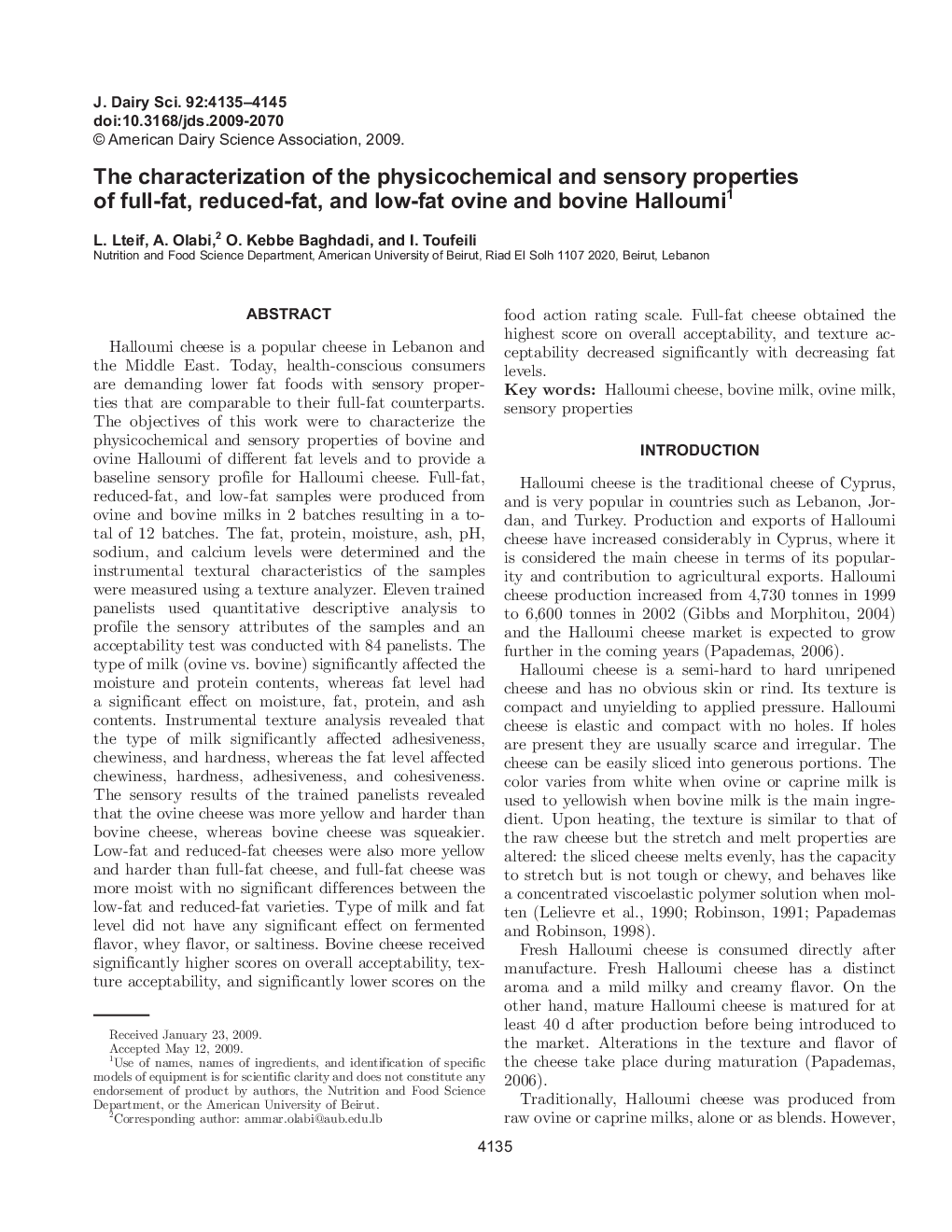| Article ID | Journal | Published Year | Pages | File Type |
|---|---|---|---|---|
| 2439439 | Journal of Dairy Science | 2009 | 11 Pages |
Abstract
Halloumi cheese is a popular cheese in Lebanon and the Middle East. Today, health-conscious consumers are demanding lower fat foods with sensory properties that are comparable to their full-fat counterparts. The objectives of this work were to characterize the physicochemical and sensory properties of bovine and ovine Halloumi of different fat levels and to provide a baseline sensory profile for Halloumi cheese. Full-fat, reduced-fat, and low-fat samples were produced from ovine and bovine milks in 2 batches resulting in a total of 12 batches. The fat, protein, moisture, ash, pH, sodium, and calcium levels were determined and the instrumental textural characteristics of the samples were measured using a texture analyzer. Eleven trained panelists used quantitative descriptive analysis to profile the sensory attributes of the samples and an acceptability test was conducted with 84 panelists. The type of milk (ovine vs. bovine) significantly affected the moisture and protein contents, whereas fat level had a significant effect on moisture, fat, protein, and ash contents. Instrumental texture analysis revealed that the type of milk significantly affected adhesiveness, chewiness, and hardness, whereas the fat level affected chewiness, hardness, adhesiveness, and cohesiveness. The sensory results of the trained panelists revealed that the ovine cheese was more yellow and harder than bovine cheese, whereas bovine cheese was squeakier. Low-fat and reduced-fat cheeses were also more yellow and harder than full-fat cheese, and full-fat cheese was more moist with no significant differences between the low-fat and reduced-fat varieties. Type of milk and fat level did not have any significant effect on fermented flavor, whey flavor, or saltiness. Bovine cheese received significantly higher scores on overall acceptability, texture acceptability, and significantly lower scores on the food action rating scale. Full-fat cheese obtained the highest score on overall acceptability, and texture acceptability decreased significantly with decreasing fat levels.
Related Topics
Life Sciences
Agricultural and Biological Sciences
Animal Science and Zoology
Authors
L. Lteif, A. Olabi, O. Kebbe Baghdadi, I. Toufeili,
